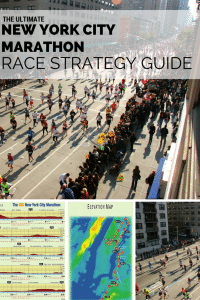The art of pacing has, sadly, become a lost art.
Gone are the times of heading out the door, running a 30 minute out-and-back and calling it four miles.
No more coming home and trying to explain to your wife how you ran a distorted cloverleaf through the subdivision.
Now you can upload your data and show her! Figuring out how to pace yourself running is no longer needed
What made running so simple, so pure of a sport, perceived effort versus the clock is just as much an afterthought as what life was like before cell phones.
Working with runners on a daily basis for almost a decade now, I have noticed a growing population of runners solely depending on GPS watches to keep a constant pace while running.
Rarely do I see workout feedback explaining how they felt going into a workout, how they felt as the workout progressed or how they felt post workout.
Feedback is wrapped up in hitting target paces, heart rate averages, and elevation gain.
Completing a workout is no more about how you feel inside, what we refer to as internal cues. Rather we focus so much on external feedback from data and devices that are readily at our fingertips.
How does this type of reliance affect our ability to gauge and adjust our pace as we move through our marathon training schedule?

I like to compare the dependence on GPS data to our vision.
If you want to experiment, stand on one foot, hands out to keep balance. Next, put hands by your sides and don’t allow them to move. Not a huge difference in the ability to keep balance.
Now, with arms remaining at your side, close your eyes.
How long were you able to remain on one foot?
Notice how much more dependent we are on our visual feedback than our proprioceptive feedback?
Same is true for most runners when you take away their GPS watch. Their ability to pace goes out the door because they can’t feel or decode what their internal cues are giving them.
So how do we regain that sense and sharpen it in training and carry it over to race day?
Pace Yourself Better in Training
Learn to pace by listening to your body.
You can’t become better at pacing until you know what you’re looking for.
Coach Jeff says, “The ability to properly adjust your effort as an experienced runner is critical when you’re pushing for that last one percent improvement to break through the plateau.”
It’s great to have that data that a GPS gives you but it should be in support of what your body is telling you.
You might be wondering:
What internal cues do I need to look for to learn how to pace myself better?
Perceived effort
On a scale of 1-10 how are you feeling.
Make notes of your effort level during different workouts in your training log. Over time you’ll begin to look back and see similarities.
Thresholds are consistently around 7-8. Easy runs are 4-6.
Learning to see a workout and automatically knowing the effort it will need before going into the workout is a huge advantage.
Breathing rate
Think about your breathing rate while running at different effort levels.
Typically the faster you run the more your breathing rate picks up. Very similar to the effort scale.
Think and feel how many steps you’re taking while you’re breathing in, while you’re breathing out.
Are you doing a workout that asks to switch paces drastically? How does your breathing change when the paces change? How does your breathing rate gradually pickup over the course of a tempo run?
Foot strike rhythm
Counting strides per minute is good for a number of reasons but it’s especially helpful with gauging different paces.
As we increase in speed, most of us increase in steps per minute as well. Sometimes faster paces or harder efforts means we can tell a difference in the sound our foot is making with the ground.
Both are great tools to learn and use as workouts progress, we fatigue, and when to adjust or gauge pace within a run or race.
Learn to pace from workouts
Why not let the RunnersConnect customized coaching schedules do the hard work for you. We will give you a variety of paces within the training cycle to practice this with. In any given week you could run workouts that culminate in your running extended periods of time at 5-6 different paces.
One of my favorite workouts to learn how to connect a pace with an effort level is the cutdown run.
In a cutdown, or progression run, the goal is to get quicker as the run progresses. Typically you’re “going through the gears” hitting several different pace ranges that you commonly train or race at.
This type of a run forces you to focus on your ability to dial in a pace based on effort multiple times throughout the workout.
Cutdown’s are just one example, but any type of workout that asks you to vary pace often throughout a run is makes for a great opportunity to learn how to gauge pace and adjust effort accordingly.
Pace Yourself Better While Racing
Matt Fitzgerald has written, “The goal in racing is to cover the distance between the start and finish lines as quickly as possible given one’s talent and conditioning levels. To achieve this goal, a runner must have a solid sense of the fastest pace he or she can sustain through the full race distance and the ability to make appropriate adjustments to pace along the way based on how he or she feels.”
How to find your goal pace from your training
All too often we set time goals based on expectations, comparisons, or qualifiers.
Many times I’ve seen 5:00 marathoners setting a goal to BQ at 3:45 in 6 months.
Although a BQ is achievable with a long-term, consistent, training it more than likely is not achievable within half a year. We need to learn to dial in a realistic goal race pace based on recent training results.
When an athletes comes to me we do sit down and talk about goal setting. We line up a timeline of racing goals which are mostly based around time.
Coaches and athletes shouldn’t even begin to talk about goal times until the runner is within 6-8 weeks from their target race.
We revisit original goal and compare it to how training has progressed over the course of the previous few months. Then formulate a goal pace to target in the final 6-8 weeks of training leading up to race day.
When we begin to taper, typically anywhere from 7 days to 3 weeks depending on athletes, we reevaluate our goal time based solely on the previous 6-8 weeks not the time we originally set 5 months prior.
This is the best formula I’ve found to setup a realistic goal time and allows us to plan for the race.
Creating a Race Plan
Now that you have a pretty good idea of how to assess a goal pace for a race, the second step would be putting together a race plan.
You wouldn’t go into a workout consisting of mile repeats without a goal time range to hit nor should you toe the line of a race without a detailed race plan.
Now that you are equipped with a goal race pace based on past training outcome you also need to take these things into consideration:
Race course elevation gain and loss
You very well could be in sub 4-hour shape with many weeks of training that prove that fitness level but if the course profile has a lot of elevation gain or loss than you need to adjust race pace based on those circumstances.
A 3:55 marathon on a course with 3,000 feet of elevation gain over 26.2 miles takes a lot more fitness than a 3:55 at Berlin, or a relatively flat course.
Study the course map, break the race down into smaller sections to enable better focus, and adjust plan accordingly to ensure the fastest 26.2 miles.
Race day weather conditions
Take the same 3:55 example. Optimal marathon temperatures for most runners are in the 50’s, although research has found that every runner has an optimal race temperature.. A 3:55 will feel a lot easier at 55 degrees compared to 75 degrees.
The rule of thumb is for every 5 degrees over 60 you can estimate 1-3 minutes added to your marathon time. With that being said, weather is a major factor is setting up a race plan that you can execute with success.
Allow some flexibility on race day
Staying with the 3:55 example that is 8:58 per mile. As mentioned before, each mile is different therefore each mile in the marathon shouldn’t be 8:58 on the dot.
Trying to do so means constantly putting in mini surges, which is not ideal for any runner in a marathon.
This is a great example of learning to pace based on effort.
Stay constant in your effort and allow 5-10 seconds of flexibility, on both sides of your target pace, to ensure you’re conserving fuel and running at a consistent effort more so than a consistent pace.
Following this guide will leave you with a race plan based on your recent training results, course profile and weather conditions, and you have a very specific idea of how to attack race day.
Now for the toughest part:
Your final step is putting it all together and executing accordingly without being influenced by hundreds of other runners. The number one mistake I continue to see in marathon racing is going out too hard in the first 6 miles.
The first 10k sets up the last 10k, good or bad. You have planned your work now it’s time to work the plan.
A sound race plan is only half the equation. The other half starts in training and unlocking the keys to better gauge and adjust pace based on what your body is telling you.
Next time out on an easy run spend time gauging effort by clicking off miles without looking at your watch but rather feeling, thinking, and listening to what your body is saying.
Before you glance at your GPS to confirm a mile split take a guess at what pace you are running and use your watch as a secondary means of feedback and confirmation.
Over time this still of knowing pace based on sensory data within will becomes fine-tuned and ultimately a better race predictor than what your watch is telling you.
RunnersConnect Bonus
Download your FREE Improvement Performance Calculator now.
This handy pace calculator helps you to determine what pace you should be running at in training and at each racing distance based on a recent race result.




